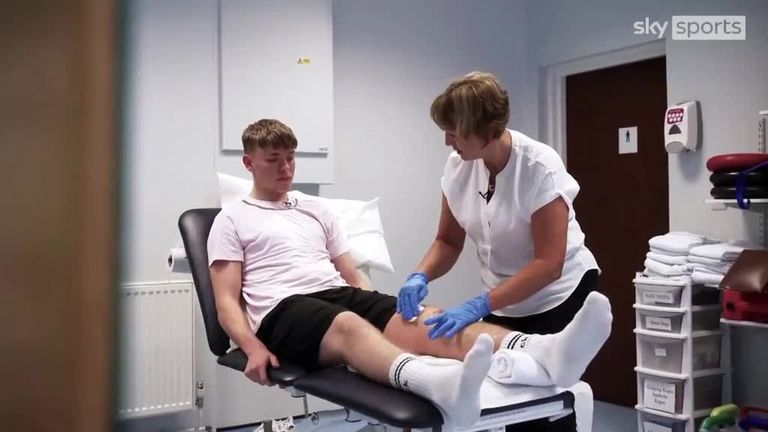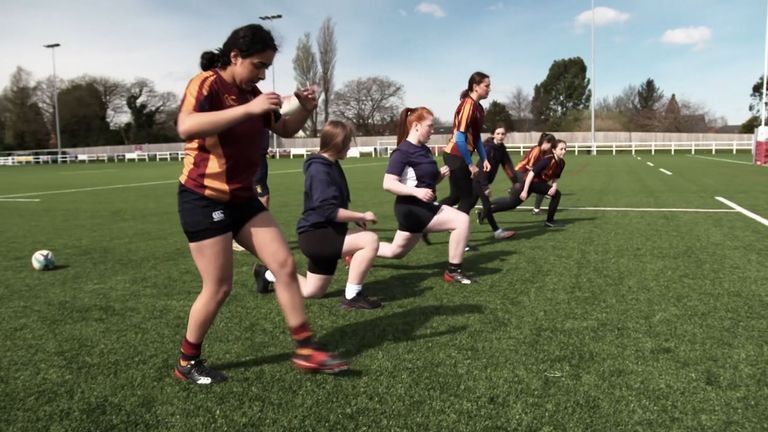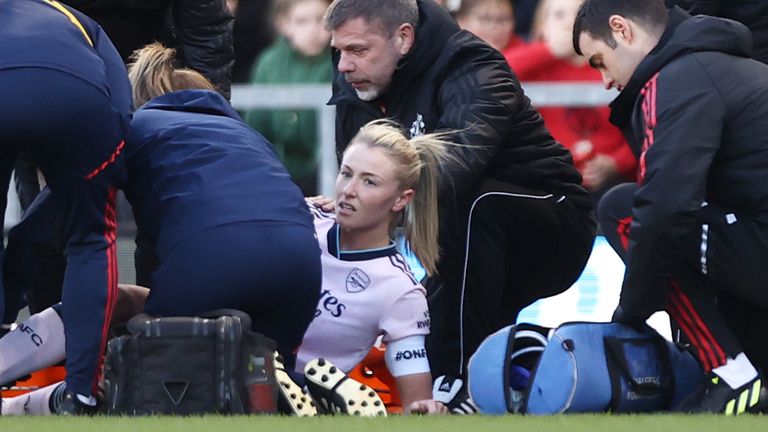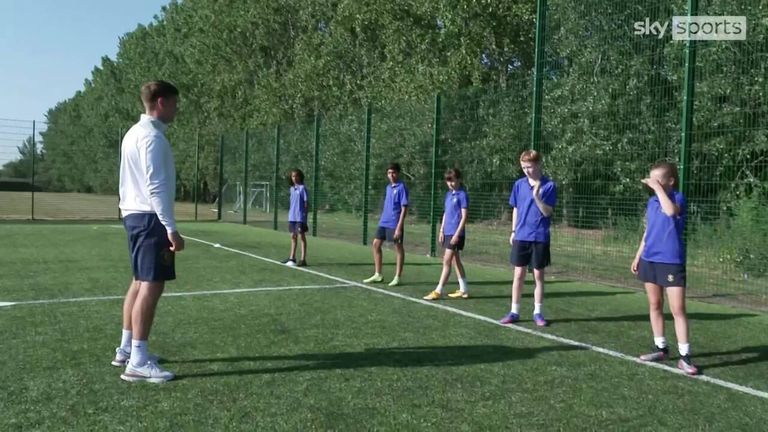[ad_1]
Sky Sports News has worked with a number of eminent sports medical professionals to highlight and investigate the reasons why there has been a 29-fold increase in the number of teenage ACL reconstruction surgeries in the last 20 years.
Consultant orthopaedic surgeons Nev Davies and Will Jackson give their answers to a number of questions arising from the worrying rise in teenage ACL Injuries playing grassroots sport…
What is an ACL? What does it do?
The ACL is one of the four main structural ligaments that control the stability of the knee. About the same thickness as your little finger, it runs inside the knee from the bottom of the thigh bone to the top of the shin bone. It’s particularly important in controlling pivoting and side-stepping movements when playing sports such as football, netball, rugby, and basketball.
Within its tissue the ACL also has important receptors, called proprioceptors that act as the communication between the brain and the knee. They allow the brain to understand where the knee is and which muscles it needs to use to control its position with movement.
Why do ACL injuries occur?
There are many factors that increase the risk including pivoting and landing sports, poor muscle strength, pitch type and decreased physical literacy. We don’t fully understand the part each plays but we know that by improving strength and balance around the knee with a structured warm-up we can reduce the risk, as advocated by Power Up To Play.
Why is this so important?
We’ve noticed more young sports athletes coming through our knee clinics with ACL ruptures and see the associated negative effects on physical, mental, social and academic well-being. The vast majority of patients require reconstructive surgery followed by 12 months of rehabilitation keeping them out of their sport for a year. Despite optimal treatment these injuries often cause long-term consequences. The frustration for us is knowing that a large number of these injuries could be prevented with wide-spread adoption of a structured, injury prevention warm-up.
What sports increase the risk of ACL injury?
All sports that involve side-stepping, pivoting and landing movements pose a risk of ACL injury e.g. football, netball, rugby, basketball.
How is the ACL commonly torn?
The majority of ACL tears or ruptures occur when the knee twists awkwardly. It is usually when the lower part of the leg is planted (or fixed) on the ground, the knee is slightly bent and the thigh, pelvis and trunk over-rotate. When this happens and the ACL tears it is often (but not always) felt as a ‘pop’ or ‘click’ within the knee. Other structures inside the knee, such as the meniscal shock absorber cartilages and the joint surface cartilage are also at risk of being damaged when this occurs.
What does ACL reconstruction surgery involve?
The operation involves taking a graft of their own tissue, usually from the hamstrings, passing them across the knee in place of the original ACL . It’s done as a keyhole technique (arthroscopy) and has been refined over the past thirty or so years.
After the operation, usually preformed as a day-case, the hard work starts with the physios and rehabilitation. Patients use crutches, as the early phase of recovery looks to reduce swelling and recover range of movement. Then the program of muscle strengthening begins with an exercise plan over the coming months.
Why is is not advisable to hurry back to sport after an ACL injury?
Patients who return to sport early without completing the proper rehabilitation programs are much more likely to re-rupture their new ACL graft and the cycle starts again at square one, although this time it’s a harder operation and comes with more risks and worse outcomes.
Are women and girls more at risk? If so, why?
Yes, four-to-six times more likely. The why is not clear yet. There are a number of factors interplaying. Recent research looking at the impact of gender bias on injury has highlighted that societal attitudes to female sports participation may be affecting injury risk. Initiatives such as the FA’s wildcats to introduce girls into football should be encouraged and the recent news that girls will have equal time to boys for PE lessons in the UK national curriculum is also a positive step in the right direction.
Another factor is muscle strength imbalances which are more noticeable in females. This may be why structured injury prevention warm-ups that include strength and balance are so effective in reducing the risk of ACL injury in teenage girls.
The role of anatomical differences and hormones in women are still being researched and need more exploring to understand how each contributes.
Can ACL injuries be prevented?
A structured injury prevention warm-up programme can reduce ACL injuries in teenagers by 50 per cent. The PEP (Prevent injury Enhance Performance) is simple, costs nothing and strengthens important muscles, improves balance and promotes athletic movement patterns.
Where can I find the warm-up?
Power Up To Play is an initiative in the UK aiming to promote this progamme and our website has information for coaches, parents and players. We aim to offer free educational training sessions to grassroots sports coaches across the UK.
This 15-minute warm-up includes strengthening, balance and agility components and needs to be performed regularly.
We are developing a UK network of like-minded clinicians who are supporting the initiative and delivering training sessions to their local coaches.
For this to be a sustainable, long-term, generational shift amongst coaches and young athletes we need partnership with funding bodies who share the same values of investing in our communities and looking after the wellbeing of young people.
For more information on the above and to get involved please visit www.poweruptoplay.org / @PowerUptoPlay
[ad_2]
Source link




